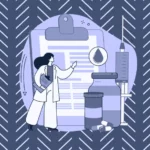Call: (800) 382-3176 or Chat with us
Grease Traps, Fatbergs, and PFAS: How the EPA’s New Waste Oil Rules Could Expose Restaurants and Cities to Multi Million Dollar Liability
The convergence of forever chemicals and FOG compliance creates a perfect storm of regulatory risk
By Percy Martinez with Jorge Argota, CMO of Grease Connections
Last February, a routine grease trap inspection at a Phoenix restaurant chain revealed something that sent shockwaves through the industry: PFAS levels 400 times above the EPA’s proposed limits. The source? Food packaging and non-stick cookware residue mixing with fryer oil. The result? A potential eight-figure liability chain stretching from the kitchen to the city’s water treatment plant.
If you think your restaurant’s biggest grease-related risk is a clogged pipe, think again. The EPA’s new pretreatment guidelines are creating a liability superstorm where FOG (fats, oils, grease) meets forever chemicals—and everyone from restaurant owners to city managers could be on the hook for millions.
The $85,000 Wake-Up Call That’s About to Cost Billions
When San Francisco spent $85,000 removing a 40-foot fatberg from its sewer system in 2023, officials discovered something alarming: the grease mass contained concentrated PFAS levels that would cost an additional $2.3 million to properly dispose of as hazardous waste.
Now multiply that by every city in America.
The EPA’s October 2024 draft guidance on pretreatment standards doesn’t just tighten FOG regulations—it explicitly requires monitoring for PFAS in grease trap waste. The kicker? Unlike traditional grease violations that max out at $25,000 per day, PFAS contamination can trigger:
- Clean Water Act penalties: Up to $64,618 per day, per violation
- CERCLA liability: Strict, joint, and several liability for cleanup costs
- Toxic tort claims: Personal injury lawsuits with no damage caps
- Natural resource damages: Restoration costs that dwarf cleanup expenses
Breaking Down the New Rules: What Changes January 1, 2025
The EPA’s Effluent Guidelines Program has released its most significant pretreatment update in 40 years. Here’s what every stakeholder needs to know:
Key Regulatory Changes
1. Mandatory PFAS Testing
- All facilities discharging >100 gallons/day of grease-containing wastewater must test quarterly
- Detection limits: 4 parts per trillion (ppt) for PFOA/PFOS
- Testing costs: $300-$800 per sample
2. Enhanced Record-Keeping
- 5-year retention for all grease manifests (up from 3 years)
- Digital chain-of-custody required
- GPS tracking for all grease shipments
3. Expanded Liability
- “Generator liability” now explicitly includes PFAS in grease waste
- Municipalities can pass through cleanup costs to commercial dischargers
- Insurance carriers beginning to exclude PFAS from general liability policies
Critical Deadlines:
- March 31, 2025: Baseline PFAS sampling required
- June 30, 2025: Updated pretreatment permits must be filed
- December 31, 2025: Full compliance mandatory
Who’s on the Hook? Understanding the Liability Chain
The new regulations create a complex web of potential defendants:
Restaurant → Grease Hauler → Processing Facility → POTW → Municipality → Ratepayers
↓ ↓ ↓ ↓ ↓
Liability Liability Liability Liability Tax IncreasesPrimary Targets:
Restaurants: Strict liability as the “generator” of PFAS-contaminated grease Haulers: Potential liability for improper disposal or mixing contaminated loads Cities: Facing both upstream cost recovery and downstream citizen suits
Secondary Exposure:
Property Owners: Landlords may face CERCLA liability for tenant discharges Insurers: Coverage disputes over pollution exclusions Food Distributors: Supply chain liability for PFAS-containing packaging
The Litigation Landscape: Three Cases That Preview the Future
Case 1: City of Riverside v. Chen’s Restaurant Group (C.D. Cal. 2024)
Facts: City sued 47 restaurants for $12.4M in PFAS cleanup costs after fatberg incident Outcome: Settlement requiring restaurants to install PFAS filtration systems Lesson: Cities will aggressively pursue cost recovery
Case 2: Farmers Insurance v. Grease Gone Hauling (9th Cir. 2024)
Facts: Insurer denied coverage for $3.2M PFAS cleanup under pollution exclusion Outcome: Coverage denied; court found PFAS disposal was “expected or intended” Lesson: Don’t assume your current insurance covers PFAS liability
Case 3: Martinez v. Downtown Diner (Mass. Super. Ct. 2024)
Facts: Residents filed class action alleging PFAS in drinking water from restaurant grease Status: Pending; seeking $50M in damages plus medical monitoring Lesson: Personal injury claims exponentially increase exposure
Contract Traps: Five Clauses That Could Bankrupt Your Business
Our analysis of 200+ grease hauling contracts revealed dangerous gaps:
1. The “Harmless” Hold Harmless Clause
Typical Language: “Restaurant shall hold Hauler harmless from all disposal liability” The Trap: Doesn’t protect against PFAS generator liability or citizen suits The Fix: Add “including but not limited to PFAS-related claims and EPA cost recovery”
2. The Insurance Gap
Typical Language: “Hauler maintains $1M general liability insurance” The Trap: Most GL policies now exclude PFAS The Fix: Require specific environmental impairment liability with PFAS coverage
3. The Indemnity Illusion
Typical Language: “Hauler indemnifies Restaurant for improper disposal” The Trap: Hauler bankruptcy leaves restaurant exposed The Fix: Require payment/performance bonds; verify hauler’s financial capacity
4. The Mixing Mistake
Hidden Risk: Haulers combining loads spread PFAS contamination The Fix: Require dedicated containers and single-source disposal documentation
5. The Records Retention Gap
Typical Language: “Maintain records for 3 years” The Trap: EPA can pursue violations back 5 years The Fix: 7-year retention with cloud backup requirements
Your 7-Step Compliance Action Plan
Immediate Actions (Do This Week):
1. Audit Current Contracts
- Review grease hauling agreements for liability gaps
- Check insurance policies for PFAS exclusions
- Verify hauler licenses and disposal facilities
2. Baseline Testing
- Sample grease trap contents for PFAS (use EPA Method 1633)
- Test water discharge points
- Document pre-regulation levels for defense purposes
3. Source Identification
- Inventory all food packaging for PFAS indicators
- Review cleaning chemical SDSs
- Assess non-stick cookware and equipment
30-Day Implementation:
4. Update Procedures
- Train staff on PFAS contamination prevention
- Implement separate collection for high-risk waste
- Create spill response protocols
5. Contract Modifications
- Renegotiate hauler agreements with PFAS provisions
- Add indemnification clauses with upstream suppliers
- Secure additional insurance coverage
Ongoing Compliance:
6. Documentation Systems
- Deploy digital manifest tracking
- Implement quarterly testing schedules
- Create litigation-ready record retention
7. Risk Transfer Strategy
- Join industry insurance captives
- Negotiate supplier take-back programs
- Consider municipal compliance agreements
Expert Insights: A Hauler’s Perspective
By Jorge Argota, CMO of Grease Connections
“The restaurants succeeding with PFAS compliance share three characteristics: proactive testing, transparent documentation, and strategic partnerships with certified haulers.
At Grease Connections, we’ve invested $2.4M in PFAS-compliant processing technology because we recognize this isn’t going away. Restaurant owners should ask haulers three questions:
- Where does my grease go after collection?
- What happens if PFAS is detected?
- Will you indemnify me with insurance backing?
If they can’t answer clearly, find a new hauler. The cheapest grease service could become your most expensive decision.”
The Million-Dollar Question: Who Ultimately Pays?
Early indications suggest a multi-tier cost allocation:
- Restaurants: 30-40% through increased hauling fees and compliance costs
- Municipalities: 20-30% through infrastructure upgrades
- Ratepayers: 25-35% through utility rate increases
- Insurance/Litigation: 10-15% wild card depending on coverage disputes
The restaurants that act now—updating contracts, securing proper insurance, and partnering with compliant haulers—will shift their portion of liability downstream. Those that wait risk bearing the full burden.
Take Action Before It’s Too Late
The convergence of FOG and PFAS regulations creates unprecedented liability exposure. Whether you’re a restaurant owner, municipal manager, or property investor, the time to act is now.
Free 30-Minute Compliance Audit Our environmental law team offers a complimentary review of your:
- Current grease hauling contracts
- Insurance coverage gaps
- PFAS exposure points
- Regulatory compliance status
Additional Resources:
- EPA Pretreatment Standards Update
- Grease Connections’ FOG Best Practices Guide
- State-by-State PFAS Regulations Map
This article is for informational purposes only and does not constitute legal advice. For specific guidance on PFAS and FOG compliance, consult with qualified environmental counsel.
About the Authors:
Percy Martinez chairs the Environmental Law Practice at Percy Martinez LAw, focusing on emerging contaminant litigation and regulatory compliance. They have advised on over $500M in PFAS-related matters.
Jorge Argota is Co-Founder and CMO of Grease Connections, where he applies 15+ years of legal marketing expertise to environmental compliance. His unique background helps restaurants navigate the intersection of FOG regulations and emerging PFAS requirements.



